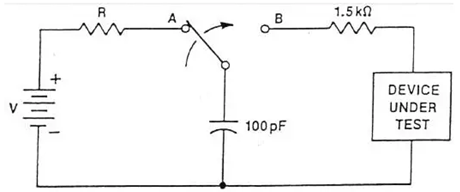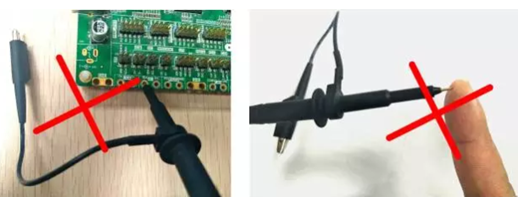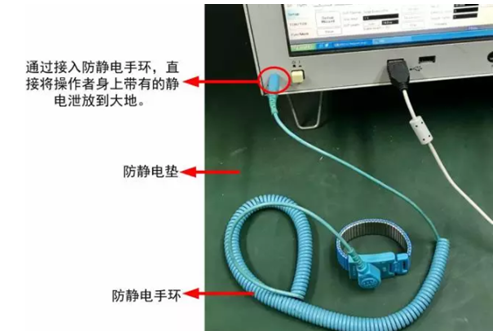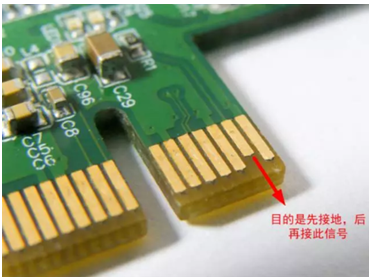Winter is coming! The damage caused by static electricity to electronic components and equipment cannot be ignored in winter. Why do production lines invest so much in anti-static measures? It is because they are afraid of being hit by static electricity! So how can we avoid the damage of static electricity to equipment in the laboratory?
1. How is static electricity generated?
-
Friction: Static electricity can be generated when two objects of different materials come into contact, rub against each other, and then separate.
-
Induction: For conductive materials, since electrons can flow freely on the surface of conductive materials, if they are placed in an electric field, positive and negative charges will be transferred due to the repulsion of like charges and attraction of opposite charges, thus generating static electricity.
-
Conduction: For conductive materials, since electrons can flow freely on its surface, if it comes into contact with a charged object, charge transfer occurs, thereby generating static electricity.
Figure 1 is a schematic diagram of the human body electrostatic model. When the switch in the circuit is connected to A, the voltage source charges the capacitor, simulating the process of human body accumulating static electricity; when the switch is connected to B, the charge stored on the capacitor is discharged to the device through the resistor (equivalent human body resistance), which is equivalent to the moment when the human body touches the device. The discharge process will generate a certain amount of instantaneous discharge current in just a few hundred microseconds, which may damage the internal components of the device.

Figure 1 Human body static electricity model
2. Why are instruments so easily broken down by static electricity?
Instrument products usually need to meet the electromagnetic compatibility requirements of the IEC61326-1 standard, which includes electrostatic immunity tests and requires that instrument products meet the test levels of 4KV for contact discharge and 8KV for air discharge according to IEC61000-4-2.
1. The higher the frequency of the instrument, the weaker the electrostatic protection ability
The oscilloscope is a high-resistance device, which is very susceptible to external static electricity induction and generates static electricity. However, the charge is difficult to discharge in the presence of strong static electricity, which easily leads to static electricity breakdown. Since the parasitic parameters of the electrostatic protection device will affect the measurement of high-frequency signals, it is impossible to integrate too many electrostatic protection devices in high-frequency instruments, resulting in a decrease in electrostatic protection capabilities.
Therefore, the higher the frequency of the instrument, the more attention should be paid to electrostatic protection.
2. Improper operation can also cause the instrument to be damaged by static electricity
For oscilloscopes, be sure to connect the ground first and then the signal. For example, the following two operations are very dangerous and must be avoided as much as possible.
Wrong operation 1: When using an oscilloscope to measure a circuit board, the probe is connected to the signal line first, and the probe ground line is connected to the ground later;
Wrong operation 2: Touch the probe needle directly with your hand, as shown in Figure 2.

Figure 2 Incorrect operation
3. What measures can we take to protect against static electricity?
Although the instrument has a certain anti-static ability, if the environmental static electricity is higher than the standard requirement, the instrument may still be damaged by static electricity, so it is necessary to understand some basic static protection measures when using the instrument.
Electrostatic protection mainly follows the principle of release before operation.
1. Keep the instrument well grounded
The purpose is to discharge static electricity to the ground. If floating ground measurement is necessary, be sure to ground before specific operations to release static electricity.
2. Perform electrostatic treatment on the environment before measurement
If conditions permit, the production line needs to be paved with anti-static flooring, and people need to wear anti-static clothing and shoes. For the use of high-frequency instruments, people also need to wear anti-static wristbands to discharge static electricity directly to the ground, as shown in Figure 3.

Figure 3 Common anti-static measures for instruments
If conditions do not permit, we have a more convenient way. Before touching the instrument, you can touch something that is well grounded with your hand. It is best to do this once in a while.
3. Be sure to connect the ground first and then the signal.
The device under test will also have static electricity (the contact resistance is small, and the release current may be higher). Therefore, when using an oscilloscope to measure a circuit board, you must first connect the probe ground wire and then connect the probe to the signal line. If you connect the probe to the test point first and then connect the probe ground, the static electricity will be released directly through the oscilloscope signal circuit and may break down the internal components of the oscilloscope. This is a very important operating step.
There are similar applications in the design of many boards and cards. For example, in the PCIE board and card shown in Figure 4, the gold finger of the clock signal is significantly shorter than other pins. This is to allow the ground wire to contact first for discharge when the card is inserted, and then the signal wire can contact safely.

Figure 4 Common anti-static measures for boards
4. Try not to touch exposed interfaces
Never touch the exposed interfaces of electronic equipment, including the probe tip of an oscilloscope.
IV. Conclusion
When using the instrument, the operator must be aware of electrostatic protection, especially in the dry winter, so as to minimize the damage of electrostatic discharge to the instrument. I emphasize again: especially in the north, especially in winter.
Previous article:How to avoid "high voltage pulse"
Next article:What fried your processor?
- Popular Resources
- Popular amplifiers
- Why is the vehicle operating system (Vehicle OS) becoming more and more important?
- Car Sensors - A detailed explanation of LiDAR
- Simple differences between automotive (ultrasonic, millimeter wave, laser) radars
- Comprehensive knowledge about automobile circuits
- Introduction of domestic automotive-grade bipolar latch Hall chip CHA44X
- Infineon Technologies and Magneti Marelli to Drive Regional Control Unit Innovation with AURIX™ TC4x MCU Family
- Power of E-band millimeter-wave radar
- Hardware design of power supply system for automobile controller
- Driving Automation Safety and Economic Engineering
 Professor at Beihang University, dedicated to promoting microcontrollers and embedded systems for over 20 years.
Professor at Beihang University, dedicated to promoting microcontrollers and embedded systems for over 20 years.
- Intel promotes AI with multi-dimensional efforts in technology, application, and ecology
- ChinaJoy Qualcomm Snapdragon Theme Pavilion takes you to experience the new changes in digital entertainment in the 5G era
- Infineon's latest generation IGBT technology platform enables precise control of speed and position
- Two test methods for LED lighting life
- Don't Let Lightning Induced Surges Scare You
- Application of brushless motor controller ML4425/4426
- Easy identification of LED power supply quality
- World's first integrated photovoltaic solar system completed in Israel
- Sliding window mean filter for avr microcontroller AD conversion
- What does call mean in the detailed explanation of ABB robot programming instructions?
- Breaking through the intelligent competition, Changan Automobile opens the "God's perspective"
- The world's first fully digital chassis, looking forward to the debut of the U7 PHEV and EV versions
- Design of automotive LIN communication simulator based on Renesas MCU
- When will solid-state batteries become popular?
- Adding solid-state batteries, CATL wants to continue to be the "King of Ning"
- The agency predicts that my country's public electric vehicle charging piles will reach 3.6 million this year, accounting for nearly 70% of the world
- U.S. senators urge NHTSA to issue new vehicle safety rules
- Giants step up investment, accelerating the application of solid-state batteries
- Guangzhou Auto Show: End-to-end competition accelerates, autonomous driving fully impacts luxury...
- Lotus launches ultra-900V hybrid technology "Luyao" to accelerate the "Win26" plan
- 11 Questions That Can Commonly Stuck in Hardware Engineer Interviews
- About the startup problem of ZVS high voltage resonant circuit
- Data acquisition based on LIS25BA bone vibration sensor of NUCLEO-767ZI
- BLE RF Related FAQs
- Design of wireless charging transmitter based on low-cost MCU_Liu Mingfeng
- TLP3547 Evaluation Board Evaluation Report (I) - Unboxing
- Nexperia analog and logic chips, lower voltage, better performance, answer questions to win prizes! The event has started~
- What is a microcontroller? What is a microcontroller used for?
- Urgently looking for embedded development experts, IoT applications
- Adding color palettes to thermal imaging

 OPA2363IDGSR
OPA2363IDGSR











 京公网安备 11010802033920号
京公网安备 11010802033920号